
Understanding the Core Types of Intellectual Property Protection
Intellectual property (IP) drives innovation in today’s knowledge-based economy. It protects original ideas, ensuring creators earn rewards for their work. From new inventions to brand names and creative content, IP rights help businesses compete and grow.
Patents
Patents protect new inventions—whether products, processes, or systems—that are novel and non-obvious. A granted patent gives the inventor exclusive rights for 20 years. In return, they must publicly disclose how the invention works. Patents stop others from making, using, or selling the invention without approval.
Trademarks
Trademarks protect the unique names, logos, or symbols that identify products or services. They help build brand identity and trust. A registered trademark gives the owner the exclusive right to use it in commerce. This prevents confusion and keeps copycats from misleading customers.
Copyrights
Copyrights protect original creative works like books, music, software, and art. They allow creators to control how others copy, share, or profit from their content. In most cases, copyright lasts for the creator’s lifetime plus 50 to 70 years, depending on the region.
Trade Secrets
Trade secrets include confidential information that gives a business a competitive advantage. Think formulas, manufacturing processes, or proprietary algorithms. These don’t require registration. As long as the information stays secret, the protection lasts indefinitely. Companies must actively safeguard their trade secrets to retain legal rights.
The global IP environment is evolving quickly. Traditional methods are no longer enough. To stay ahead, organizations must combine legal strategy with AI-driven tools.
Eureka AI enables smarter, faster, and more scalable IP protection
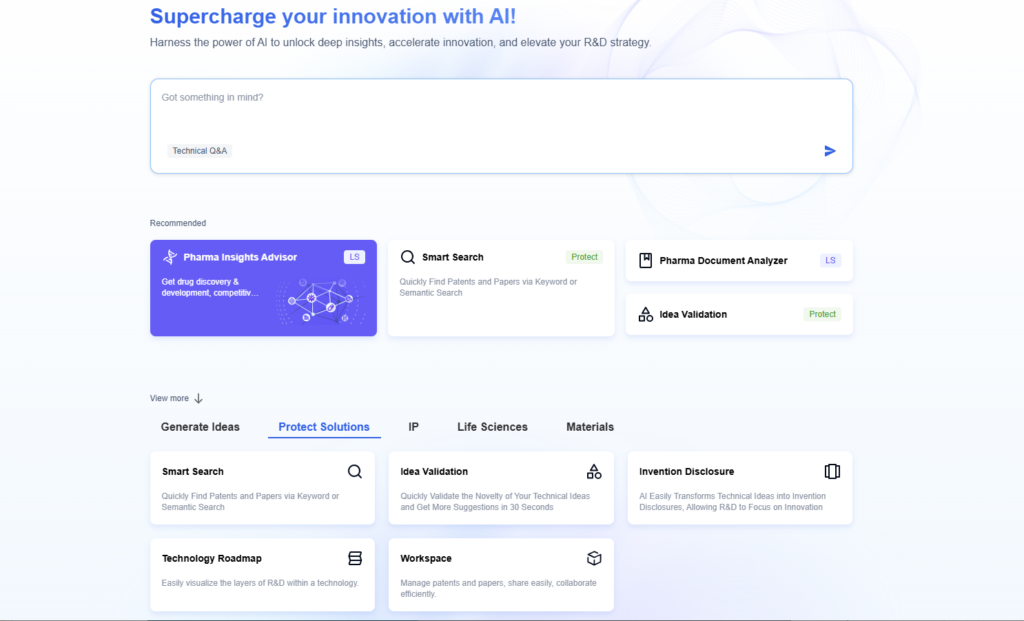
The New Challenges of Global IP Protection in a Digital World
Intellectual property fuels innovation, drives economic growth, and powers global trade. But in today’s digital and interconnected world, protecting IP has never been more difficult. With just one click, digital files—songs, software, designs, and inventions—can be copied and shared worldwide. This speed brings opportunity but also risk. Creators face income loss, reputational harm, and shrinking incentives to innovate.
As global trade expands, companies must manage a patchwork of IP laws across countries. A patent strong in one country may be unenforceable in another. Counterfeit goods move quickly across borders, and cultural views on IP vary widely. These inconsistencies make enforcement difficult, especially for startups and small businesses with limited legal resources.
The rise of artificial intelligence has introduced new complications. AI now creates inventions, music, code, and designs. But who owns the rights to AI-generated content? Courts and regulators are still deciding. In 2024, the U.S. Patent Office issued guidelines requiring human contribution in AI-created inventions. The EU’s AI Act added transparency rules for AI-generated media. Meanwhile, companies face lawsuits over deepfake songs and AI tools that mimic real artists—forcing new rules around content ownership.

Cybersecurity adds another layer. It’s no longer just about stopping counterfeit goods. Companies must now protect against cyberattacks, IP theft, and fake digital products. For example, fake versions of popular AI apps like ChatGPT flooded app stores, tricking users and damaging brand trust. In response, countries like China have updated anti-piracy laws to address digital threats more directly.
With so much complexity, companies need smarter ways to defend their innovations. That’s where AI-powered platforms like PatSnap’s Eureka AI Agent come in. Eureka helps teams navigate the IP landscape by automating patent research, flagging potential risks, and identifying global trends. It scans worldwide databases and delivers actionable insights in seconds, helping innovators protect and scale their ideas with confidence.
Why Strong IP Protection Matters More Than Ever
In today’s innovation race, strong IP protection is no longer optional—it’s essential. A secured idea often determines who leads the market and who falls behind. Companies that protect their inventions early gain a real edge. With solid patents, startups and R&D teams can build products confidently. They know their work won’t be stolen or copied without recourse.
Weak protection, on the other hand, invites risk. Without clear rights, competitors may copy ideas, launch faster, and capture market share. That means all the time, money, and talent poured into innovation can be lost. Smart businesses act early. They lock down patents and trademarks before bringing products to market.
IP protection matters even more in global markets. A startup in California or India can’t ignore what happens in Europe or China. Securing rights in major regions helps companies scale globally and build trust. It also enables partnerships, licensing deals, and investor confidence. A strong IP portfolio signals value and unlocks funding opportunities.
Investors look closely at IP when making decisions. Robust protection boosts valuation and attracts strategic partners. IP becomes a critical asset—just like real estate or capital. When safeguarded, it fuels long-term business growth.
Stronger IP systems also encourage more innovation. When inventors trust the system, they’re more likely to share ideas. They publish research, build partnerships, and launch new products with less fear. A healthy IP environment drives progress across every sector.
Without strong protection, innovation slows. Piracy, counterfeits, and copycats hurt motivation and kill returns. Teams hold back, fearing others will exploit their ideas. Countries with weak IP laws often struggle to retain talent and grow tech sectors.
From Traditional IP Practices to AI-Enabled Solutions
The Burden of Traditional IP Management
Securing intellectual property has traditionally been labor-intensive and slow. Inventors would describe their ideas, then spend hours searching databases for prior art. These manual searches often used complex Boolean logic. Small errors or missing keywords could lead to overlooked documents. Legal teams worked separately from R&D, causing delays in drafting and filing patents.
Managing patent portfolios brought more complexity. Teams tracked deadlines using spreadsheets or basic software. Monitoring competitor filings and staying updated on global publications took up significant resources. As innovation accelerated, these methods became unsustainable.
Each year brings millions of new patents and research papers. Technical domains overlap and evolve. Traditional tools can’t keep pace. The need for smarter, integrated processes has never been more urgent.
The Rise of AI in IP Discovery
AI has begun to transform how professionals search and analyze IP. Instead of using keywords, users can now describe an invention in plain language. AI-powered engines then search global patent databases using semantic understanding.
This shift dramatically improves search quality. AI systems like PatSnap’s understand concept relationships, even when terminology varies. Engineers, scientists, and attorneys can all access relevant prior art faster and with fewer errors.
Advanced platforms also perform real-time novelty checks. They highlight key differentiators and suggest how to improve patentability. By surfacing hidden insights, AI tools give innovators a strategic advantage.
Drafting Made Easier with AI Assistance
Documentation is another area where AI improves speed and clarity. Instead of writing invention disclosures from scratch, users receive AI-generated drafts. These drafts organize information clearly and cover technical and legal requirements.
Attorneys can edit and refine drafts instead of starting from zero. Inventors save time and focus on improving the idea itself. AI also assists with claim generation and summary writing.
This collaborative drafting reduces back-and-forth and accelerates submission timelines. Teams stay aligned while producing higher-quality patent applications.
Managing Portfolios with AI Insight
Beyond drafting, AI enhances portfolio management. AI systems monitor new patent filings and alert teams about relevant developments. Companies stay ahead of competitors and avoid infringement risks.
Interactive dashboards map out tech trends, crowded spaces, and white space opportunities. These visual insights support strategic planning and R&D investment decisions.
PatSnap’s Eureka offers this intelligence instantly. Teams once reliant on weeks of manual research now get results in seconds. They make faster, better-informed decisions.
Breaking Down Silos Across Teams
AI platforms unify technical, legal, and business teams. Cloud-based tools let users annotate documents, share insights, and review data together. Everyone accesses the same knowledge base in real time.
AI-generated summaries and visualizations help teams quickly understand complex findings. A scientist and an attorney can align on IP strategy during one short meeting.
By integrating IP with innovation workflows, AI transforms protection from an isolated task to a strategic advantage. Eureka by PatSnap exemplifies this shift—helping organizations innovate smarter, faster, and more securely.
Patsnap Eureka AI Agent Platform: A Seamless IP Protection Workflow
PatSnap Eureka AI Agent provides an integrated suite of AI agents for end-to-end IP protection. Shown above are its key tools: Smart Search, Idea Validation, Invention Disclosure, Technology Roadmap, and Workspace. These components correspond to the critical stages of protecting an innovation, creating a seamless workflow from the birth of an idea to managing a patent portfolio. Below, we explain how each Eureka AI agent works and the role it plays in strengthening IP protection.
Step 1: Idea Validation – Instantly Check Novelty with Smart AI Search
Every innovation journey begins with an idea—but is it truly original? Eureka’s Idea Validation agent helps answer that question instantly. Instead of days of research, users can enter a short technical description of their solution—typically 50+ words—along with the expected technical effect. The system then scans global patent databases and literature to find similar inventions.
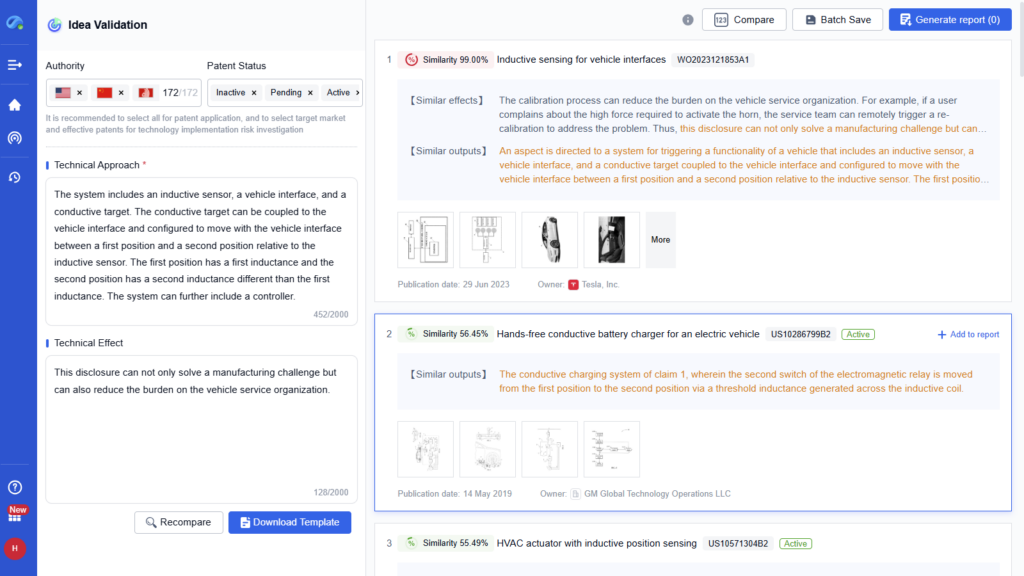
With a simple input, the agent highlights patents that share similar concepts, showing how close they are in both function and effect. Results include a similarity score, key claims, and visuals from matching patents, helping users spot overlap or confirm uniqueness fast. In seconds, the platform reveals whether your idea stands out or needs refinement.
Users can download a formatted novelty report, compare top matches, or explore suggestions to improve their idea. With support for over 170 authorities, this tool ensures a truly global novelty check. It’s a powerful way to reduce R&D waste, validate ideas early, and set your innovation up for patent success.

Step 2: Smart Search – Discover Prior Art Instantly with AI
Once you’ve validated your idea, the next step is to investigate prior art. Eureka’s Smart Search agent makes this step faster and more intelligent. Just enter a few keywords, a technical phrase, or even a full sentence describing your idea. The AI will immediately search global patents and technical literature with semantic understanding—no need for complex Boolean logic.
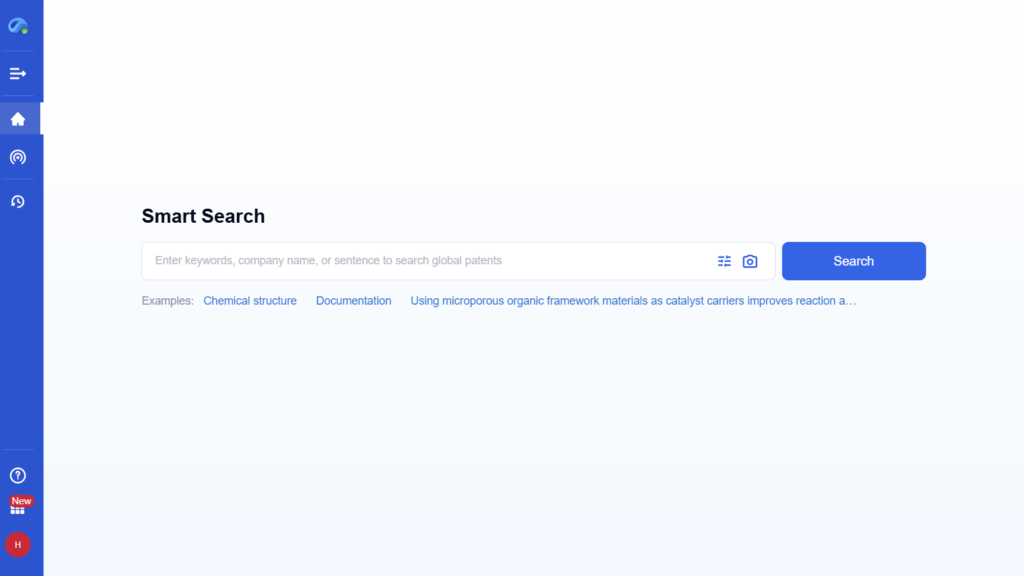
Smart Search doesn’t just match keywords. It understands technical context, synonyms, and concept variations. Whether you’re working on gene sequencing, catalyst composition, or embedded electronics, the tool retrieves the most relevant global documents. It also supports filtering by material properties, technical output, company, date, and more.
You can visualize the landscape with advanced analytics: keyword clouds, patent clusters, and technical field trends. This helps you assess technology saturation, spot white space, and track competitor filings. With Smart Search, you get faster insights and better decisions at the earliest stage of R&D.

Eureka Smart Search replaces hours of manual searching with one intuitive, AI-powered query. It’s like having a research analyst who’s read every patent on earth—and can explain them in seconds.
Step 3: Invention Disclosure – Turn Ideas into Patent-Ready Drafts
After validating your idea and exploring prior art, the next step is to document the invention clearly and professionally. Eureka’s Invention Disclosure agent helps you do this in minutes.
Instead of struggling to format your thoughts into legal language, simply enter a detailed description of your idea in plain English. The system prompts you to include essential sections like technical background, technical means, and expected effects.
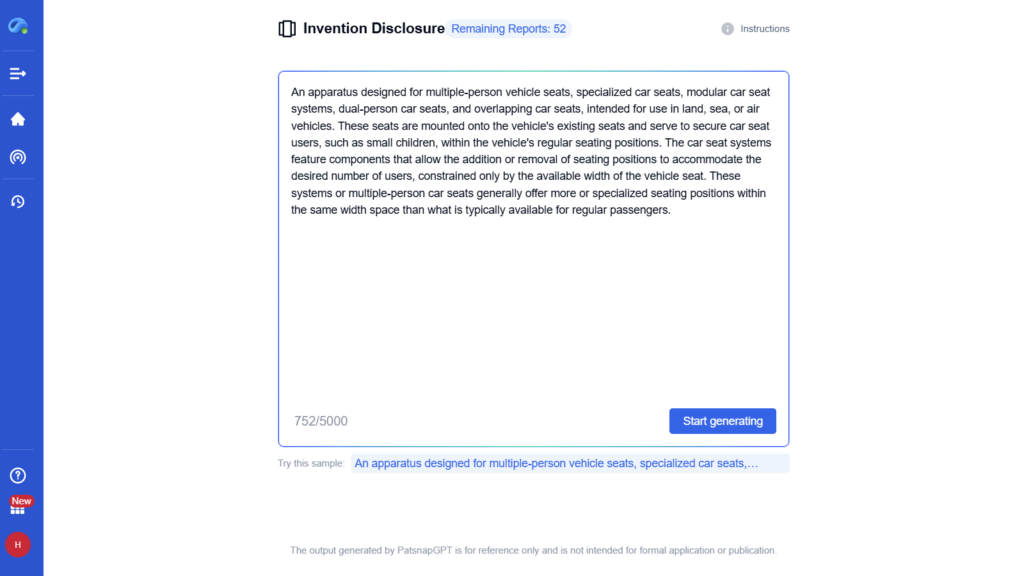
Once entered, Eureka automatically interprets and structures your input. It breaks the content into patent-relevant sections such as:
- Technical Field
- Prior Art
- Problem to Solve
- Technical Solution
- Benefits and Effects
The AI then generates a formalized invention disclosure, highlighting novelty and aligning with patent office expectations. You can review and refine this draft collaboratively with your team or legal counsel, ensuring everything is accurate before submission.
By handling the structure, formatting, and initial drafting, this agent frees R&D professionals to focus on innovation. It also reduces delays and miscommunication between inventors and IP teams.
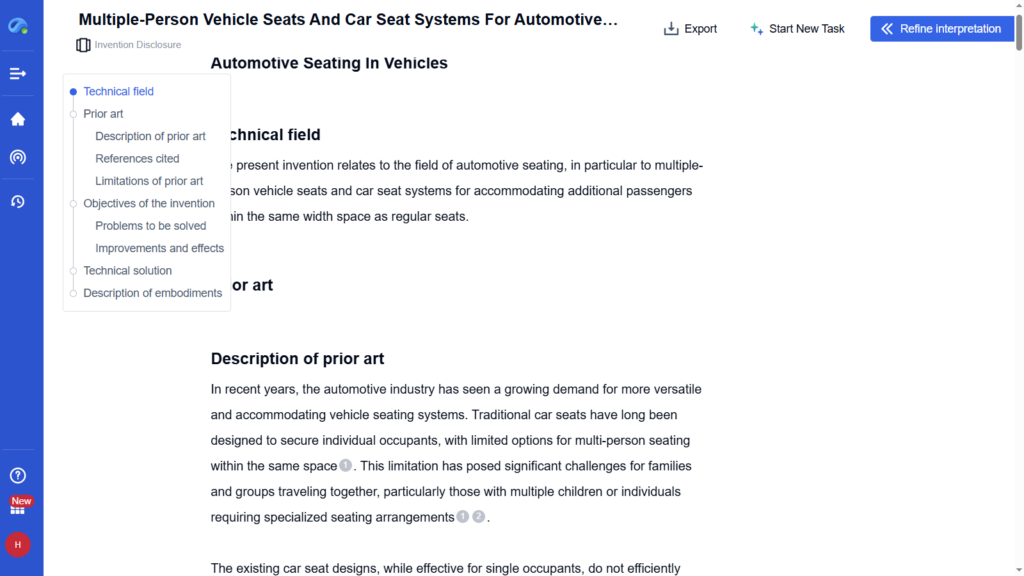
With one click, your raw idea becomes a structured, patent-ready document — saving time and increasing quality.
Step 4: Technology Roadmap – Turn Patent Data Into Strategic Insight
The Technology Roadmap agent helps teams visualize how technologies evolve over time. It automatically generates detailed roadmaps using real patent data tied to selected keywords, technical themes, and enterprises. Users start by entering a technology topic, adding companies or filters, and setting relevant keywords. With one click, Eureka processes global patents and builds a multi-year timeline across technical branches.

Each roadmap lays out innovation clusters by year and domain. For example, selecting “semiconductors” and keywords like “silicon,” “gallium arsenide,” or “indium phosphate” reveals thousands of patents grouped by topic such as integrated circuits or memory devices. Teams can view how ideas progressed from foundational methods to advanced designs. This timeline shows not only who led each phase of innovation but also identifies white space for future opportunities.
Eureka allows users to edit and refine the roadmap by selecting different patent titles or adjusting categories. Teams can compare alternative technologies and uncover competitive trends. The result is a living innovation map that supports R&D strategy and IP planning. Instead of compiling charts manually, teams gain a clear and up-to-date view of where the technology stands and where to go next.
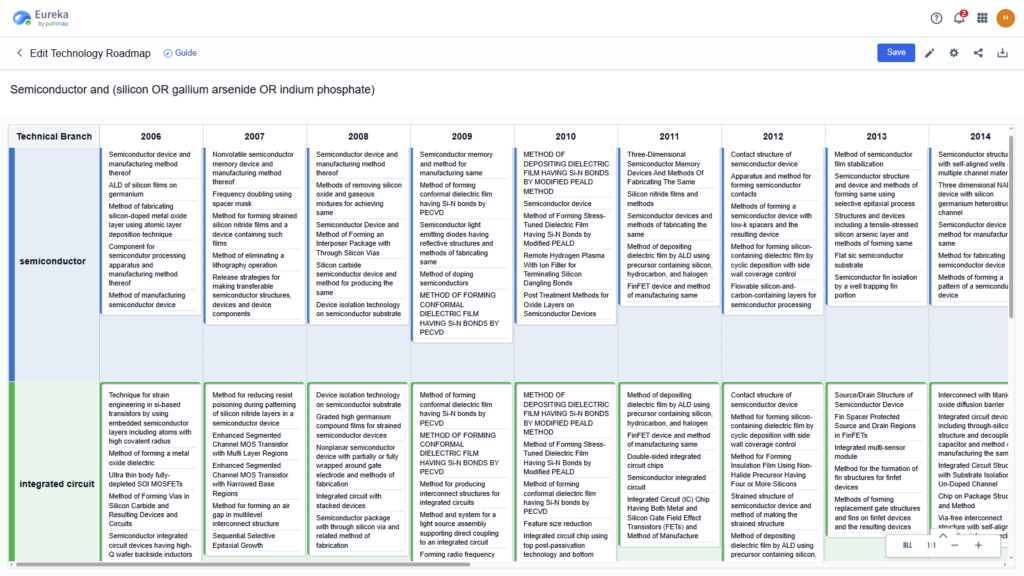
The roadmap helps answer key questions: What subfields are saturated? Where should we focus next? What gaps could lead to breakthrough patents? For CTOs, innovation managers, and IP strategists, this agent transforms data into foresight. It aligns technical development with business goals and empowers teams to act on emerging trends fast.
Step 5: Workspace – Manage, Share, and Act on Innovation in One Place
The Eureka Workspace acts as a centralized hub for your innovation process. It brings together all your validated ideas, search results, drafts, and roadmap insights into one shared environment. Instead of juggling emails, spreadsheets, or disconnected files, teams can manage everything from early-stage research to patent filing within a single interface.
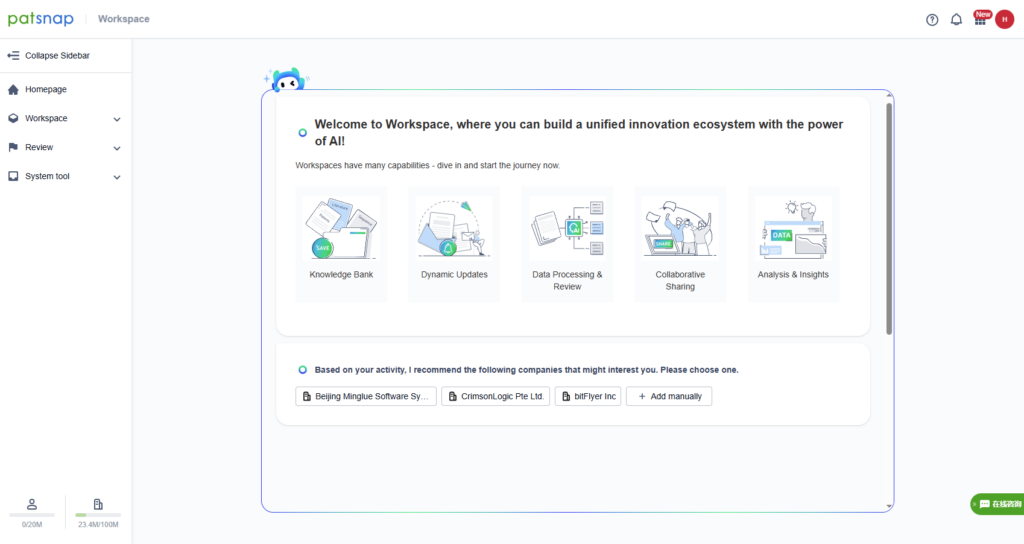
Workspace offers several powerful features:
- Knowledge Bank stores your documents, literature, and patent insights in one place.
- Dynamic Updates ensure your data stays current as Eureka monitors changes across the innovation landscape.
- AI-Powered Processing & Review helps you sort, filter, and analyze key information with less manual effort.
- Collaborative Sharing lets legal, R&D, and business teams work together—adding comments, uploading drafts, and making decisions side-by-side.
- Analysis & Insights gives you visual dashboards and summaries to track progress and discover hidden opportunities.
Users can also receive company recommendations based on ongoing research trends, making it easy to monitor potential collaborators or competitors. Every agent in the Eureka suite connects seamlessly into Workspace, ensuring all outputs—from Smart Search results to Invention Disclosure drafts—are instantly accessible and organized.
In short, Workspace makes IP protection a team effort. It empowers your organization to move fast, stay aligned, and turn ideas into real-world assets with precision and confidence.
To get detailed scientific explanations of intellectual property protection, try Patsnap Eureka.

